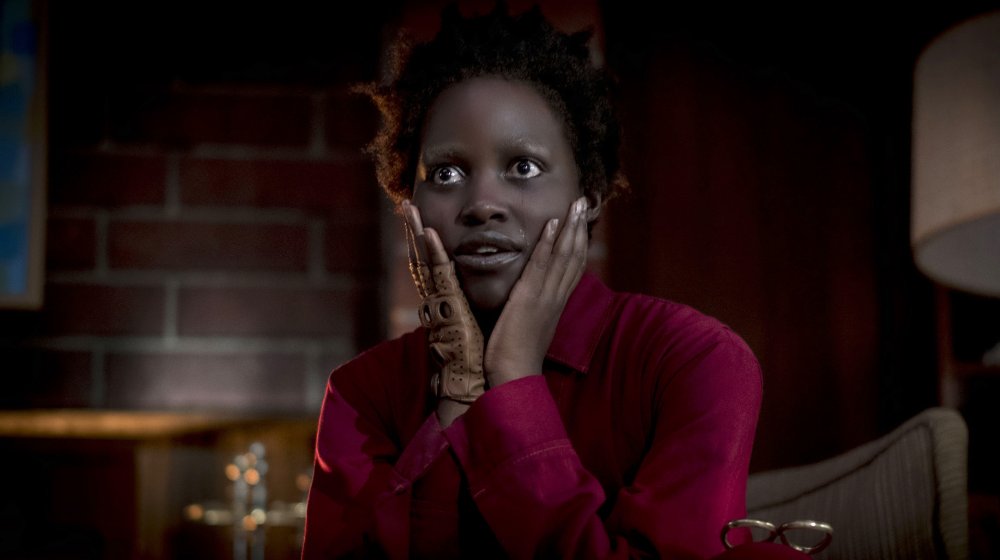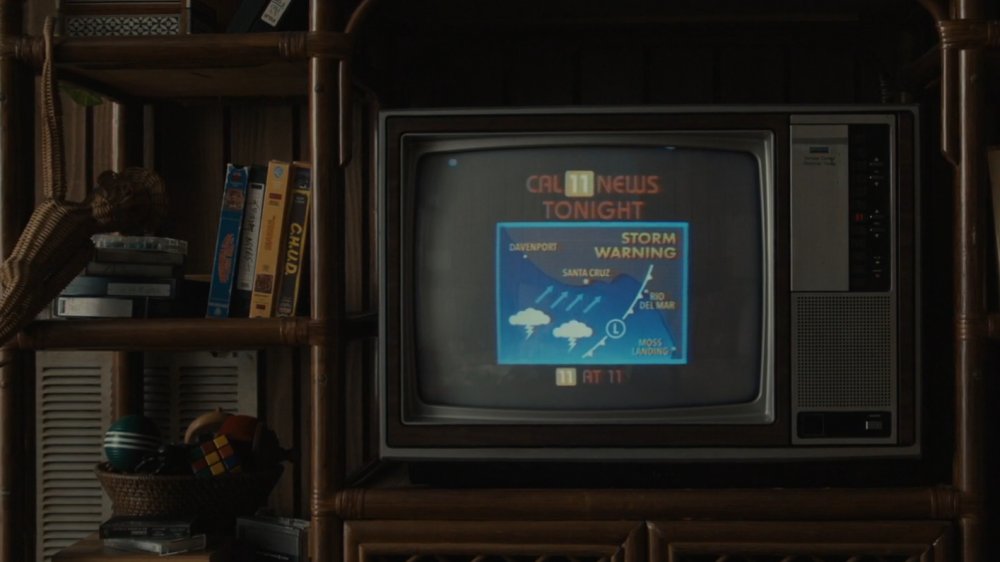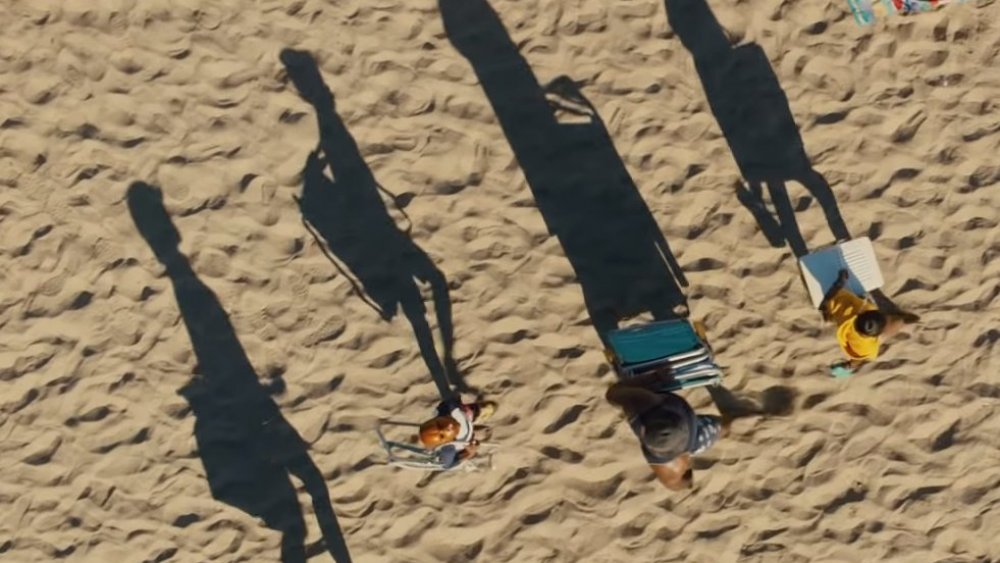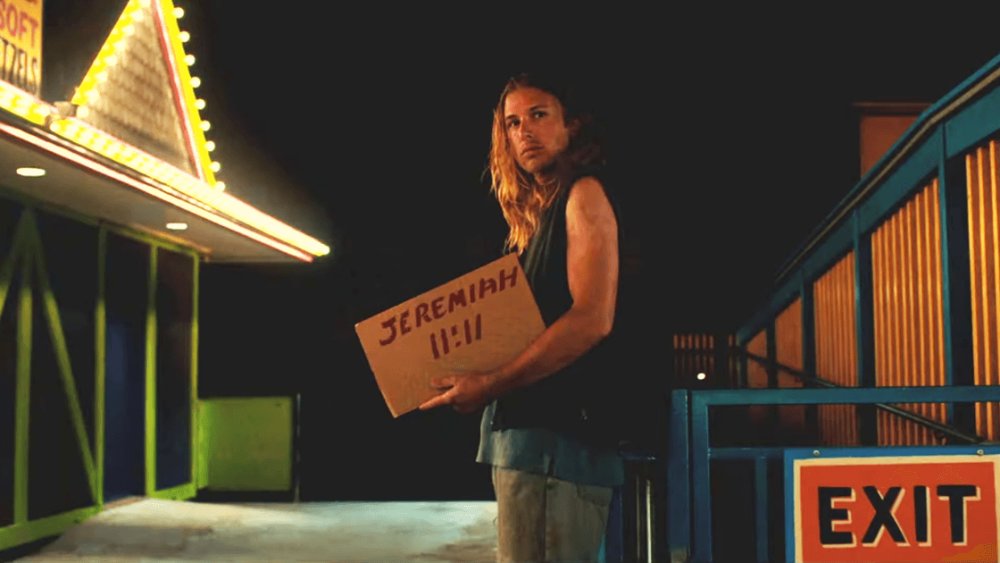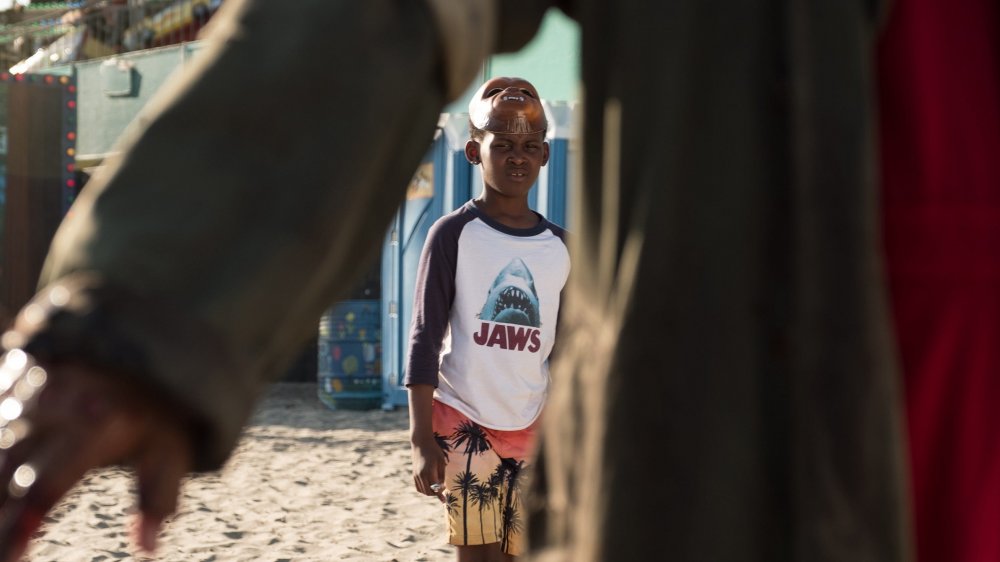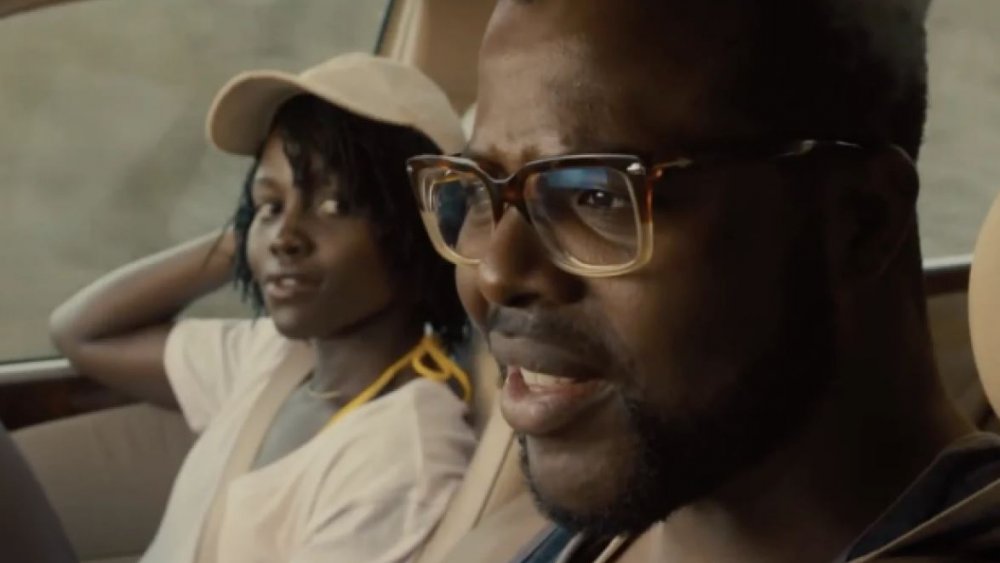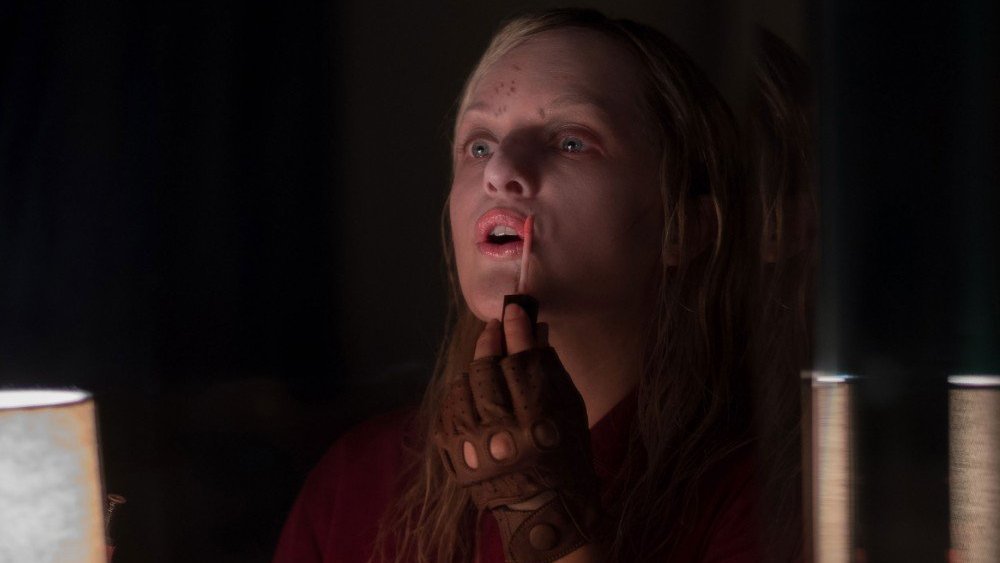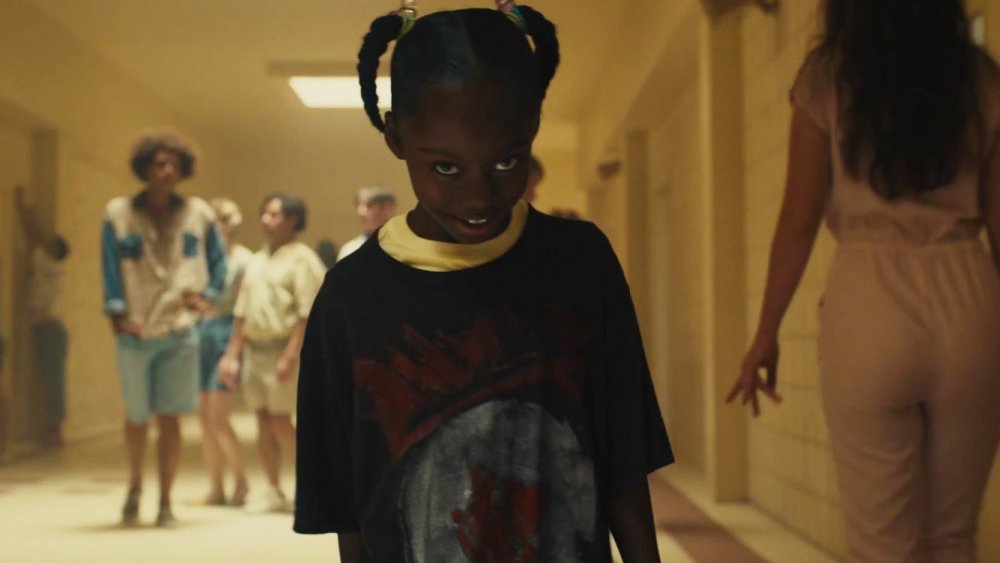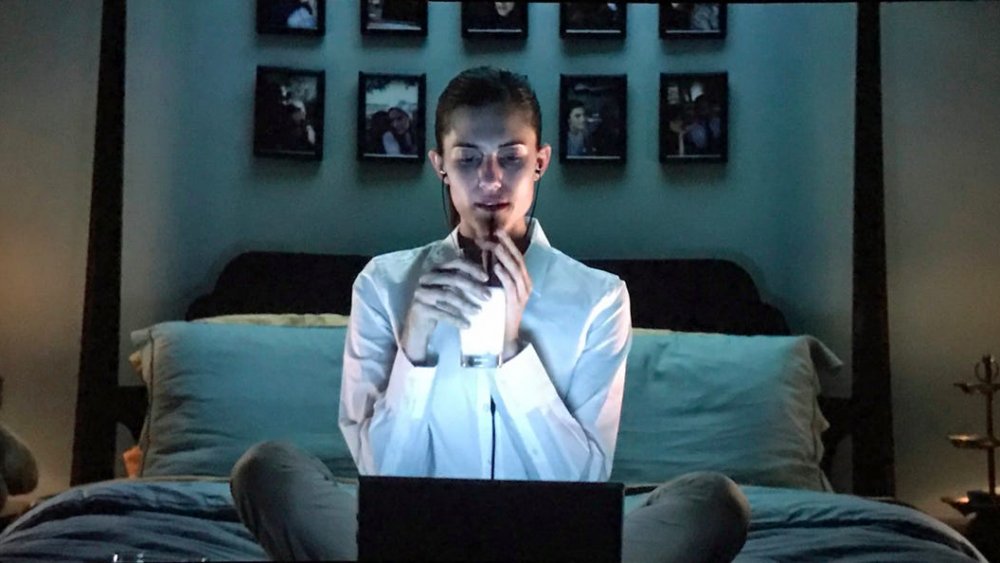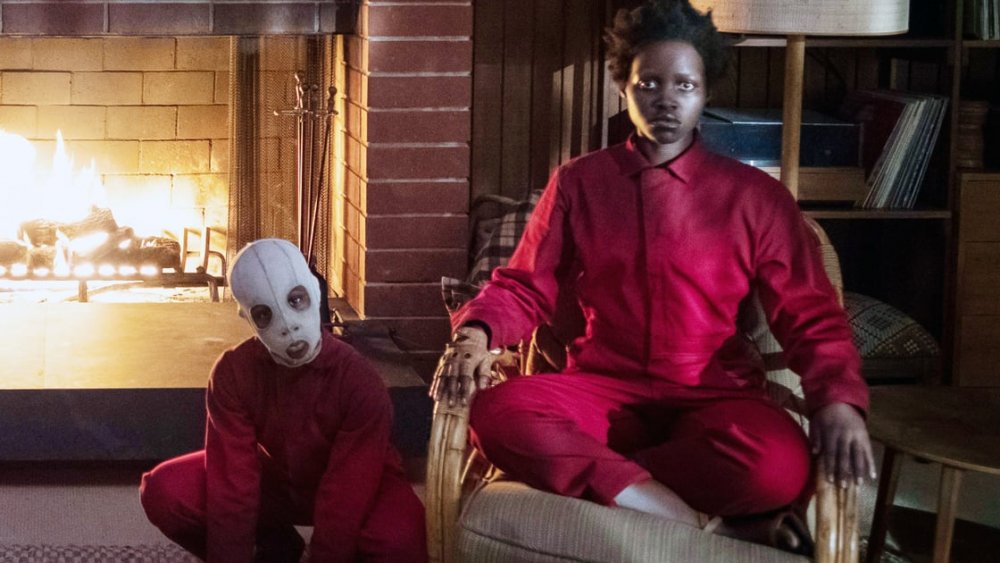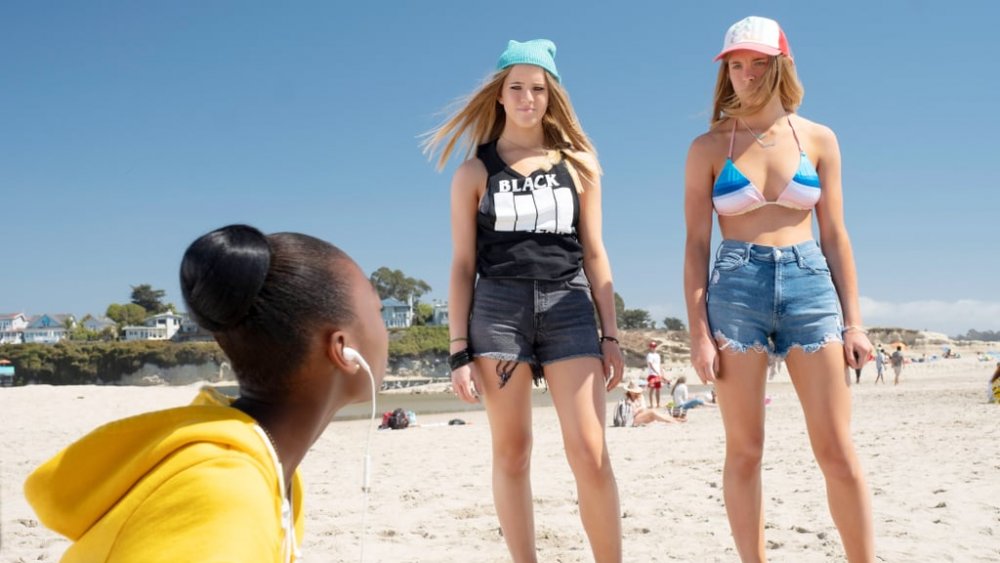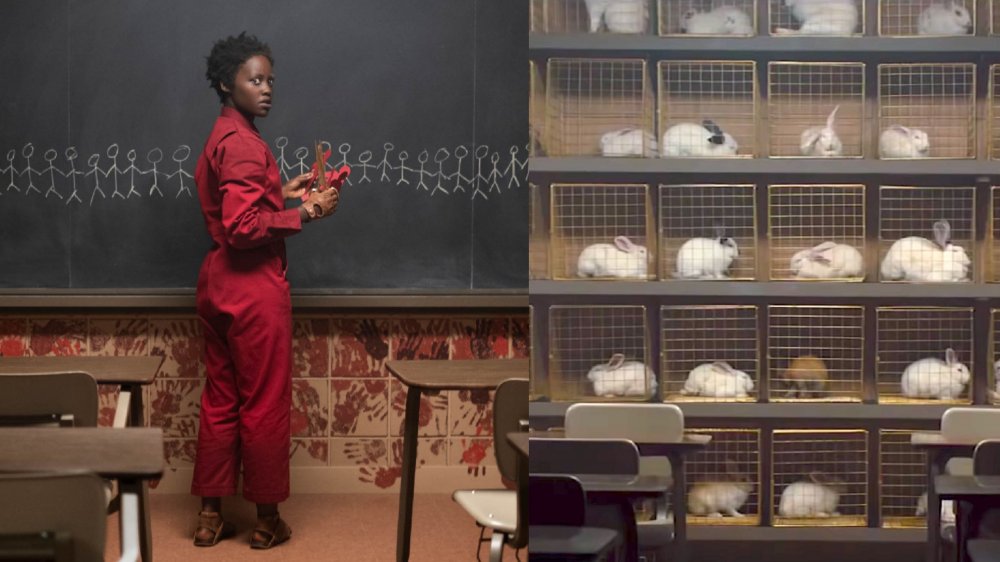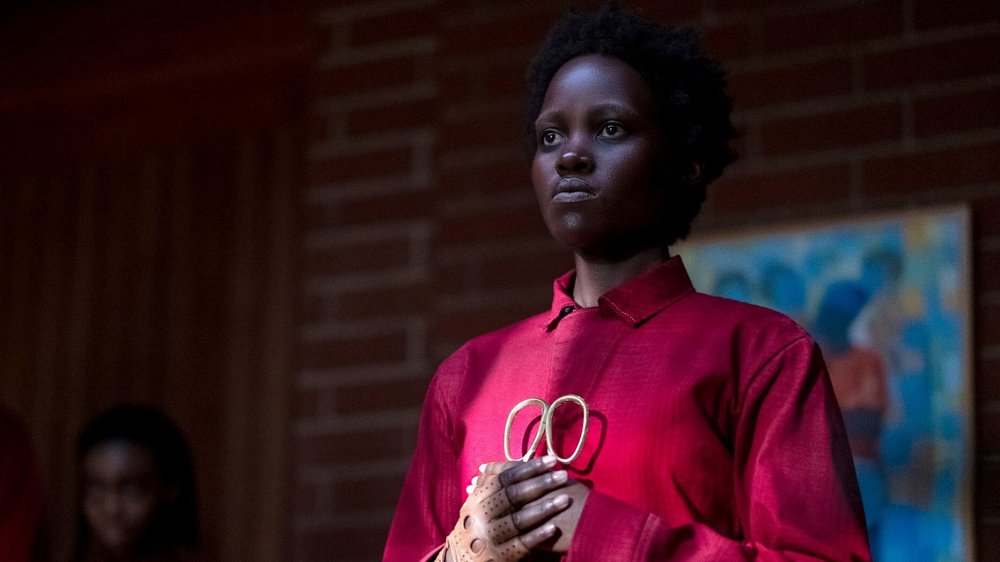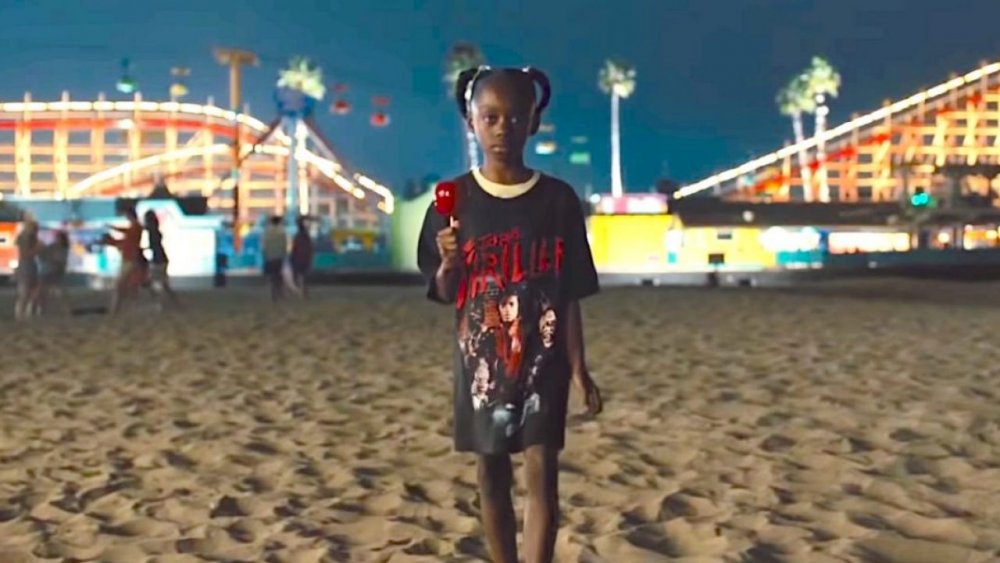Things You Only Notice The Second Time You Watch Us
After Jordan Peele blew audiences away and took home an Academy Award for Best Original Screenplay with his 2017 directorial debut, Get Out, fans couldn't wait to see where this clever writer/director would go next. Luckily, they didn't have to wait long. Peele, sticking with his now-beloved brand of social commentary presented in the horror and thriller genres, released Us in the spring of 2019.
Us tells the story of the Wilson family — mother Adelaide (Lupita Nyong'o), father Gabe (Winston Duke), daughter Zora (Shahadi Wright Joseph), and son Jason (Evan Alex) — as they head to the beach for a relaxing summer vacation. But once they arrive, Adelaide, who experienced a life-changing event at that same beach as a child, starts dealing with some seriously ominous feelings. And that's when the family is visited by identical versions of themselves clad in red jumpsuits, presenting a complex, sprawling mystery.
In a film where every single actor plays two distinct versions of themselves — with Nyong'o as the serious standout — there's a lot to unpack, and true to form, Peele filled his film with plenty of Easter eggs, references, and hints. Here's what you only notice when you're watching Us for the second (or seventh) time. Huge spoilers for Us ahead!
Adelaide's VHS collection is super important
The very first shot of Us features a series of VHS tapes in young Adelaide's house, and unsurprisingly, pretty much all of the movies featured have some connection to the film's overall plot. Among the most visible are C.H.U.D, The Goonies, The Man with Two Brains, and A Nightmare on Elm Street.
If you're familiar with these movies, you can probably figure out why Peele placed them so prominently in Us' opening scene. C.H.U.D., for one, is a story about a mysterious outbreak of murders in New York City, which are committed by mutants living underneath the metropolis. (Peele also told Polygon that this choice was personal, as his first girlfriend's father, Douglas Cheek, directed C.H.U.D.)
Not only does The Goonies involve an underground journey, but Red, Adelaide's double, even loosely quotes Sean Astin's character towards the end of Us, saying that it's the Tethered's "time" to be above ground. As for The Man with Two Brains and A Nightmare on Elm Street, the first references what it's like for two souls to share one kind of existence, while the second is referenced by Pluto's scarred face — Jason's Tethered counterpart — as well as the single brown glove adopted by the Tethered.
Shadows show both sides of existence
Long before the Wilsons' Tethered counterparts show up at their beach house to kick off a truly terrifying night, Jordan Peele hints at their very existence by using several shadows in several shots. For example, as the Wilson family vacation begins and they head to the beach, Peele uses an overhead shot to show all four family members and their long shadows — which actually manage to dwarf the actors — as an indication of what's to come. Apparently, Peele got this shot simply thanks to some good natural lighting. As he told journalist Kevin McCarthy, no practical effects were used for this stunning and significant shot.
Of course, this leads to the infamous scene where the Tethered appear at the beach house, holding hands at the end of the driveway and casting looming, ominous shadows before they even approach the Wilsons. Once again, Peele uses the shadows as a smart metaphor, showing that these villains aren't just random home invaders but the Wilsons' actual "shadows."
The number 11 shows up a ton of times in Us
In a film about the duality of man and literal "doubles," it should come as no surprise that 11:11 pops up time and time again. As young Adelaide heads into the house of mirrors, she sees a young, scraggly man holding a sign that says "Jeremiah 11:11," referencing a Bible verse. That particular scripture reads, "Therefore thus saith the Lord, behold, I will bring evil upon them, which they shall not be able to escape; and though they shall cry unto me, I will not hearken unto them," likely referencing the world's helplessness when met with the ultra-violent Tethered.
However, that's not the only time 11:11 shows up in Us. Right before the Tethered arrive at the Wilsons' home, Gabe tells Adelaide he wants to finish watching a baseball game where the score is 11 to 11, and when Adelaide puts Jason to bed, the clock reads 11:11. Finally, when the homeless man returns later in the film, he has a grotesque new facial feature — four 1s carved into his forehead.
The film's first on-screen victim shows up right away
In both the past and present timeline, there's a homeless man carrying an 11:11 sign, but he plays a much more significant role than just holding a piece of cardboard. He's also the very first victim of the Tethered takeover. After a young Adelaide sees him in 1986, her son, Jason, spots the homeless man's Tethered counterpart on the beach in the present day, standing ominously near the carnival entrance — which we later learn is atop a Tethered compound — with blood dripping from his hand.
Once you've already seen the movie, you realize that just moments earlier, as the Wilsons drove to the beach, they saw the real homeless man, apparently dead and being loaded into an ambulance. Certainly, the presence of a dead body so early in the movie is ominous enough, but it's only later that viewers understand the connection between the bloody doppelgänger and the dead hobo. Clearly, before the Tethered come for Us' main characters, they start causing deadly chaos as they finally leave their underground prison underneath the Santa Cruz boardwalk.
'I Got 5 on It' means more than you think
Even if you've only seen the trailer for Us, you probably remember Jordan Peele's use of "I Got 5 On It" by Luniz, as well as the remix by composer Michael Abels that comes back around during the film's third act. With that in mind, it shouldn't come as a surprise that the song is super significant, from its lyrics to the way Peele highlights it in the movie.
Early in the movie, the song starts playing in the Wilsons' car during their drive to Santa Cruz. Gabe describes it as a "classic" and sings along, and when his kids say it's "about drugs" — which it is — Gabe denies it, telling them to just enjoy it. However, when Adelaide tries to get Jason to snap along to the beat, she's wildly off, which is the very first clue that she's actually her own Tethered counterpart.
Beyond that, "I Got 5 on It" definitely is about drugs. Specifically, it's about how the singer can only afford half of his stash, and his friend has the other half. Since Us is all about duality, it makes perfect sense that Peele chose to include this song.
The Tethered recognize their own
When the Wilsons arrive for their vacation, they meet up with their friends, Kitty and Josh Tyler (Elisabeth Moss and Tim Heidecker), an obnoxious, much wealthier family with two snooty twin teenagers (real twins Cali and Noelle Sheldon). While Gabe and Josh talk about Josh's new boat, which makes Gabe incredibly jealous, Kitty admits to Adelaide that she's recently had plastic surgery in between sips of rosé. This detail seems innocuous at the time, but later, Kitty's facelift becomes relevant again.
When the Wilsons flee to the Tyler's luxurious beachfront mansion for safety, they find that all of the Tylers have already been brutally murdered by their own Tethered counterparts, and before long, Adelaide finds herself face to face with Kitty's double, Dahlia. Before approaching Adelaide, Dahlia puts on Kitty's lipstick, silently laughing and crying into a vanity mirror, and she also gruesomely slices the sides of her face, mimicking Kitty's facelift in a horrifying way. However, when Dahlia actually acknowledges Adelaide, she doesn't try to kill her, likely because she recognizes Adelaide as a fellow member of the Tethered, giving audiences yet another hint to Adelaide's real identity.
Red's memories form the backbone of the Tethered's plan
From the very beginning of the film, Peele plants clues about the Tethered's eventual plan to overtake the world from their human doubles with two pop culture references that seem glaringly obvious in hindsight. First is Hands Across America, the public fundraiser event from the 1980s, which appears in an ad that young Adelaide is watching on television in one of Us' very first scenes. As we later learn, after each Tethered kills their double, they join their brethren and hold hands in a giant line meant to go across the world, exactly like Hands Across America.
Young Adelaide is also wearing an oversized Michael Jackson shirt at the carnival where she gets lost in the house of mirrors, and the King of Pop's influence can clearly be seen in the Tethered's red jacket and single glove. Beyond that, Adelaide's shirt specifically references "Thriller," where the music video shows Michael Jackson becoming a zombie himself by the end, referencing, once again, that Adelaide is really Tethered.
Fruit Loops make a triumphant return in Us
After the resounding success of Get Out, which has become a beloved horror classic in its own right, it makes complete sense that Peele would sneak references to his debut hit into Us. However, the reference he uses is pretty subtle, and amidst all the commotion throughout Us, Peele's cleverest nod is actually pretty tricky to spot.
When the Wilsons hide out at the Tyler's mansion after killing the other family's doubles, they debate whether or not they should run or hide, turning on the news to see that these attacks are spread out across the entire area. During the scene, Jason snacks on Fruit Loops without milk in a direct reference to Get Out's Rose Armitage (Allison Williams), who eats Fruit Loops and drinks milk as a twisted reward for delivering another Black body to her family. You might only notice this one on repeat viewings, but it's definitely a smart throwback to Peele's incredibly layered directorial debut.
What's up with Red's signature croak?
The Wilsons' Tethered counterparts — Red (Adelaide), Abraham (Gabe), Umbrae (Zora), and Pluto (Jason) — are terrifying enough when they first arrive at the Wilsons' house in the dead of night, but their vocal patterns definitely up the ante. As the scene unfolds, it becomes clear that Red is the only Tethered who can speak, and when the other members are introduced, they're also non-verbal, indicating that Red is different. However, her voice is definitely unusual, and thanks to a knockout performance from Nyong'o, Red speaks in an unsettling, creepy croak for the entire film.
Red's weird vocal stylings could very well be due to the fact that, as an underground dweller, she rarely speaks, but it could also be because Red is the real Adelaide who was choked and then replaced by her Tethered counterpart as a child. This would also explain why Red is the only verbal Tethered, as she spent the first part of her existence above ground with humans.
Jordan Peele is a huge fan of The Shining
Get Out was packed with little references to Stanley Kubrick's classic horror film The Shining, so naturally, Us has plenty of references to the Stephen King adaptation, as well. Perhaps the most obvious is the Tyler twins. Not only are twins an integral part of The Shining's ghost story, but the way that the Tyler twins are posed after their deaths directly mimics the dead girls that haunt The Shining's Overlook Hotel.
Gabe's weapon of choice, a baseball bat, is also familiar, as Shelley Duvall's Wendy Torrance uses a bat to fend off her homicidal husband, Jack Torrance (Jack Nicholson), during one of The Shining's scariest moments. However, perhaps the subtlest reference to The Shining in Us is the use of overhead helicopter shots of the California countryside, a style which Kubrick also employs to show viewers just how isolated the Overlook is. Considering that Peele uses it to show a connected line of the Tethered crossing the mountains and valleys of California, he definitely achieved the same ominous effect. And as a nice little off-screen Easter egg, Peele also dressed as Jack Torrance during Us' press tour.
Run, rabbit, run
In Get Out, Peele uses Flanagan and Allen's song "Run Rabbit Run" to great effect, but still, nobody could've guessed that this song would be a huge clue about the director's next movie. Whether Peele intended that or not, Us features rabbits constantly throughout the film. After a whole bunch of mysterious rabbit cages appear in the film's title sequences, we eventually learn that the Tethered used to eat the raw, bloody bunnies in order to survive, as they were forced to exist underground without any assistance from their captors.
Rabbits, a traditional symbol of rebirth, continue to pop up throughout the film, as one of young Adelaide's toys and as an integral part of Zora's wardrobe. After wearing a shirt with a rabbit on it, Zora sports a pajama top for the rest of the film with the word "Thỏ" written on it. What does "Thỏ" mean, exactly? It's a Vietnamese word, and if you guessed it means "rabbit," you'd be correct.
Scissors explain the true meaning of Us
All of the promotional material for Us prominently featured an enormous, frightening pair of golden scissors, and sure enough, when audiences got to see the film, those scissors returned, serving as the Tethered army's main weapon. As Peele has discussed, choosing scissors as a weapon was far from a random choice.
In an interview with Entertainment Weekly shortly after the film's release in 2019, Peele explained why both rabbits and scissors play such a big part in Us. When it comes to scissors, the metaphor is pretty straightforward. As Peele explained to the publication, "There's a duality to scissors — a whole made up of two parts, but also, they lie in this territory between the mundane and the absolutely terrifying." He also revealed to EW that he finds both rabbits and scissors unnerving, saying, "They're both scary things to me, and both inane things, so I love subverting and bringing out the scariness in things you wouldn't necessarily associate with that."
Us has a connection to a beloved 1980s movie
Us is set in the 1980s, and as a result, it references plenty of '80s phenomena, like Michael Jackson, Hands Across America, and The Goonies. However, one of its best 1980s pop culture references probably flew under the radar for first-time viewers.
If the carnival where young Adelaide ends up switching places with her Tethered double looks familiar, that's probably because the Santa Cruz boardwalk is also featured in 1987's The Lost Boys. Just to drive the point home, Adelaide's mother says that there's a movie filming on the boardwalk, specifically referencing The Lost Boys, which would've been filmed in 1986, when these scenes take place. Peele confirmed this to Uproxx, saying, "There is a reference to The Lost Boys shooting by the carousel. They're walking down the Santa Monica boardwalk, and the mother says, 'You know they're shooting a movie over there by the carousel.'" Since The Lost Boys is about young vampires, it's a perfect reference to slip into this cleverly constructed horror movie.
